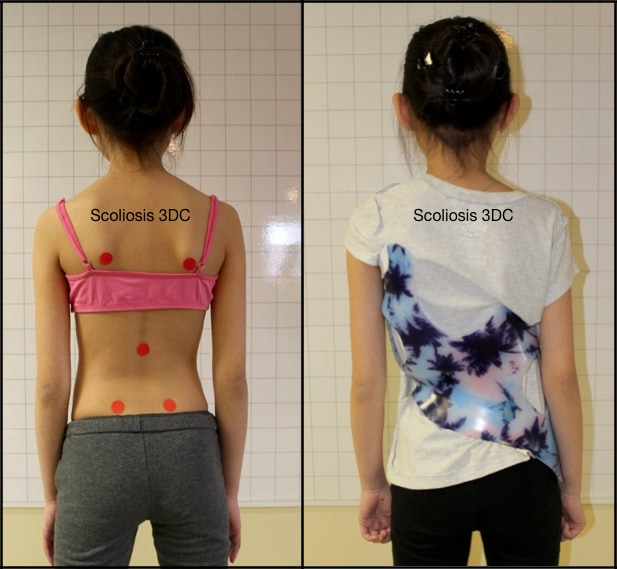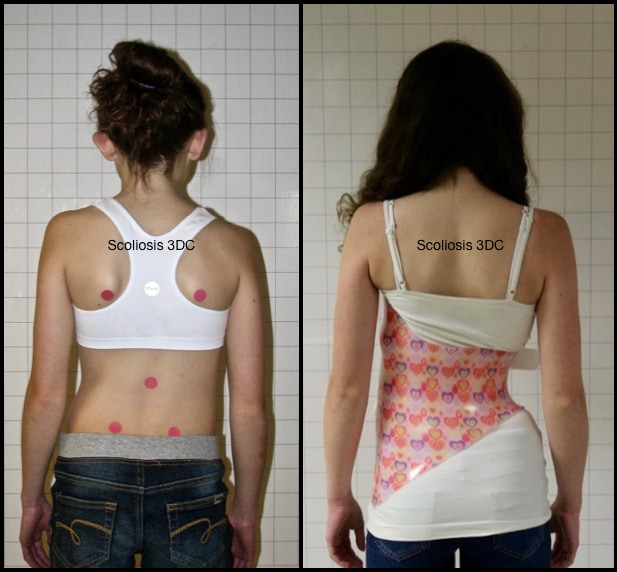Thoracolumbar scoliosis is a curvature of the spine at the junction of the mid back (lower thoracic) and low back (upper lumbar). Thoracolumbar scoliosis can be caused by a variety of reasons but as with all types of scoliosis it is usually idiopathic, about 80 – 90% of the time.
According to one recent study on the epidemiology of scoliosis*, nearly half of scoliosis patients have thoracic curves. The next most common types of curves are thoracolumbar and lumbar curves which together account for about 40% of all scoliosis curves.
At Scoliosis 3DC® we are all about curve pattern distinction because our scoliosis exercise instruction and bracing are curve pattern-specific. People sometimes ask if their scoliosis is a common curve pattern. Scoliosis curves are fairly unique – many exhibit similar curve patterns but even when curves appear similar in the frontal plane curves can vary in the sagittal and transverse planes. The reason for this is due to the three dimensionality of scoliosis. No two curves are identical which is the reason why our scoliosis treatments are nuanced and individual to each patient.
In early adolescence, the prevalence of scoliosis is about equal by gender at a Cobb angle of 10º. Girls are more likely to progress though and the prevalence rate increases for girls to as much as 7:1 for moderate curves (25º- 49º Cobb angle) and as high as 10:1 for severe curves (≥50ºCobb angle). Although the prevalence for girls with scoliosis is far greater, when it comes to thoracolumbar and lumbar curves, boys exhibit that curve pattern more frequently, almost 50% of the time. Girls usually have thoracic or double major curves and present with thoracolumbar/lumbar curves about 36% of the time.
Thoracolumbar curves are usually convex to the right. Left thoracolumbar curves are more unusual. Other than double major curves, thoracolumbar and lumbar curves have the greatest risk of progression. The good news for patients with thoracolumbar curves is that the location of the curve apex makes it extremely amenable to treatment.


Bracing at this lower juncture may allow for a smaller brace in comparison to the typical scoliosis brace. This means the brace may be easier to conceal which is important for some kids. This can also help to contribute to improved bracing compliance. The brace is also beneficial in terms of comfort since there is less material compared to other braces. When it comes to controlling the progression of thoracolumbar curves, as with all curves, one important component of success is starting treatment early.

The patient whose x-rays are shown has a sister with a double major curve who we had braced previously, so there is a family history!
When the younger of the two sisters developed the thoracolumbar curve shown on the left, the girls’ mom was told it was mild and to check back in a year. Yikes! How we dislike the wait-and-see approach! Apparently, Mom did too since she called us to take care of her youngest daughter as well. The x-ray she brought (left) showed that the younger sister’s curve was not mild, as she was told, but moderate. Considering this patient is ten years old and has a family history, bracing early was the logical choice. Her recent in-brace x-ray (right) shows an excellent spinal correction. We are very optimistic for her.
We have reported on cases like this in the past which have resulted in resolved thoracolumbar scoliosis through thoracolumbar bracing and scoliosis-specific exercise. Click here and here.
If your child is an older adolescent, bracing may still offer several benefits. Many older adolescents are fit for a brace because any residual growth still offers the opportunity for some change in terms of curve and postural improvement. For adults with thoracolumbar curves, the brace can help those experiencing back pain by providing spinal support to help alleviate pain episodes. Another important benefit for adults is that wearing the right brace during times of fatigue can help reduce the asymmetric loading that often occurs in that circumstance. Fatigue usually occurs in the mid-afternoon or later in the day as the muscles that hold the body erect begin to grow tired. When this occurs, the patient can fall into their curve, which can lead to progression. Bracing can provide the scoliotic with spinal support by putting the spine in a corrected position and holding it there. This added support and corrective effect can help control progression during adulthood.
*https://www.ncbi.nlm.nih.gov/pmc/articles/PMC3566258/
Updated: Feb 3, 2025

